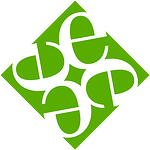You Might Want to Rollover Your Old 401(k) into an IRA—Here’s Why
%20into%20an%20IRA%E2%80%94Here%E2%80%99s%20Why.jpg?width=848&height=477&name=You%20Might%20Want%20to%20Rollover%20Your%20Old%20401(k)%20into%20an%20IRA%E2%80%94Here%E2%80%99s%20Why.jpg)
Estimated reading time: 2.5 minutes
Did you leave your retirement savings behind when you left your last job? It’s a common enough occurrence among busy, working Americans, but leaving your old 401(k) to collect dust is a missed opportunity. Untouched funds aren’t going to help you achieve your investment goals, but rolling your funds over into a Self-Directed IRA (SDIRA) and diversifying your portfolio just might.
What’s a Self-Directed IRA? A SDIRA is an IRA like any other, but with one key difference: you call the shots. You decide how much, when, and most of all, what to invest in. You can invest in the things that interest you and pass on anything that doesn’t. A Self-Directed IRA gives you the opportunity to build a truly diversified (thus, more resilient) portfolio, and take advantage of alternative investments.
Unlike cashing out your old 401(k), there’s no fee to roll it over into a SDIRA.
Benefits of a 401(k) Rollover
More investment options. Your 401(k)’s investment options are limited to the parameters agreed upon by your plan and employer, but a 401k rollover to SDIRA leaves you with the ability to invest in any investment opportunity the IRS allows.
Consolidating and maximizing opportunities. People who change jobs frequently might find that they have multiple 401(k) accounts, which can get confusing. Consistently rolling over 401(k)s from former employers to one IRA simplifies things. It ensures that there’s only one place you need to look to keep track of your account balance and investments.
More control over your account. While this would be an accurate statement to make of any 401(k) to IRA rollover, it’s especially true with a Self-Directed IRA. With a SDIRA, you are the master of your retirement account. While your account will require a custodian/administrator to do the recordkeeping for the assets in your account, nothing moves in or out of it without your say so.
Estate planning advantages. Many 401(k)s pay out in a lump sum to save themselves hassle, which can have unfortunate tax consequences for your beneficiaries. With an IRA, your beneficiaries will have several options and be able to select the distribution method that suits them best.
No more guessing games. Companies have a lot of influence over their 401(k)s, so the rules of any given 401(k) aren’t standardized and some can be tricky to understand. IRAs on the other hand, are all governed by the same set of rules, which are provided by the IRS.
With all this said, 401(k)s do have a few advantages of their own, which you can read about here.
How to Rollover Your Old 401(k) into an IRA
The process of rolling over your old 401(k) into a Self-Directed IRA is simple and transparent. Once you’re all set with your new SDIRA account, you can put your money back to work by investing in alternative assets. Not sure what you can invest in? Start here.




























0 Comment